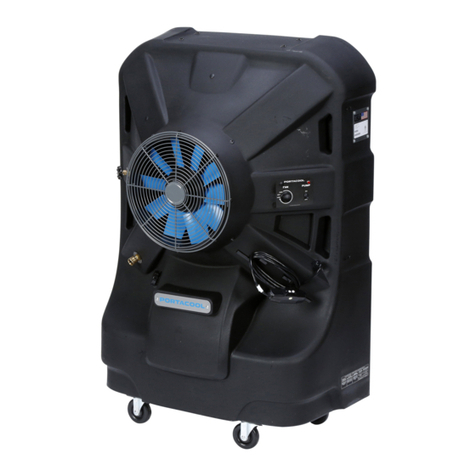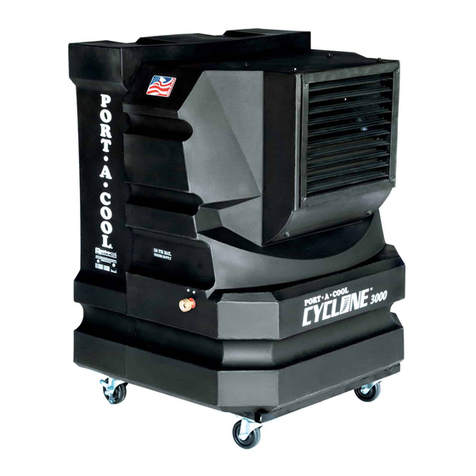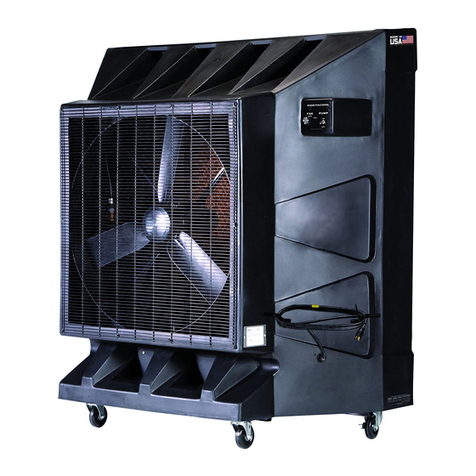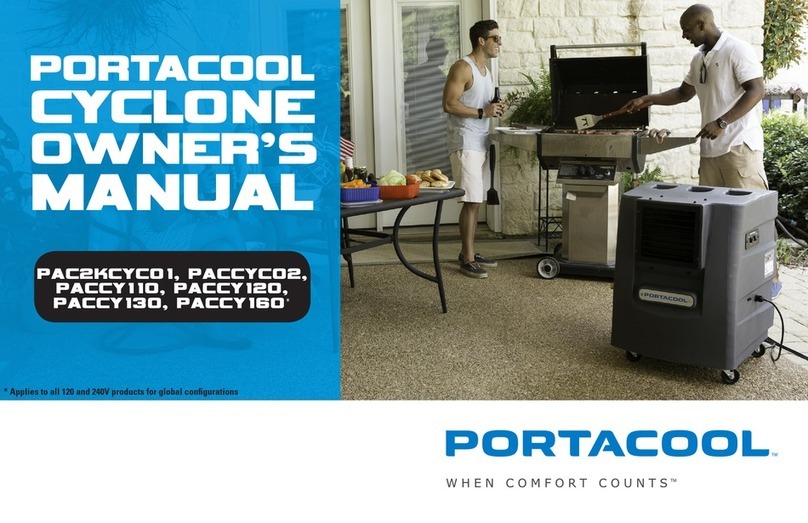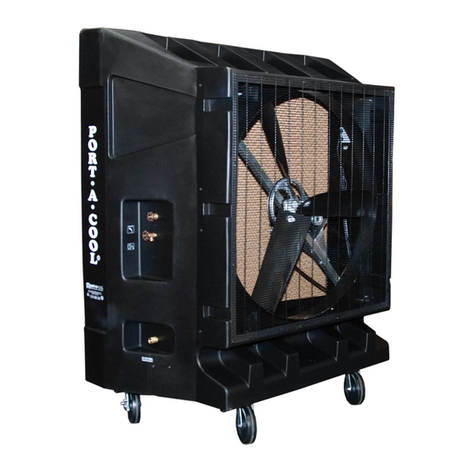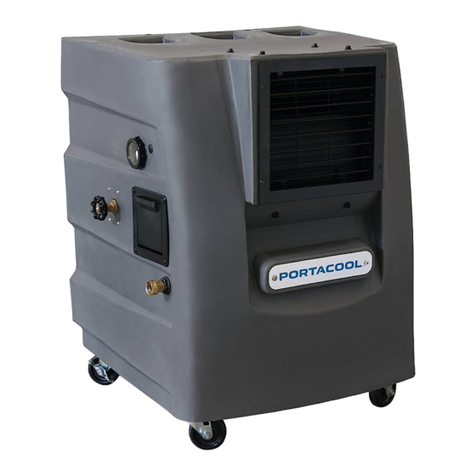
PORT-A-COOL® Hazardous Location Units
*
I. INTRODUCTION
The PORT-A-COOL® unit is a fully self-contained, portable, high efficiency
evaporative cooler that is proudly made in America
at our factory located in Center, Texas.
A. What is Evaporative Cooling?
When trying to understand evaporative cooling, it may be best to think of air as being like a sponge, in
that regard, air has an ability to absorb moisture that it comes in contact with. The amount of moisture that the
air will absorb depends on the state of the air, or specifically, how much moisture the air already contains and
the temperature of the air. If the air is warm and contains only a small amount of moisture, it will more readily
absorb moisture. As air cools, its volume decreases, and with it, its ability to absorb moisture decreases.
The term “relative humidity” describes the quantity of water in the air in relation to its total capacity.
Any volume of air at any given temperature has an ability to hold a certain quantity of moisture. If the air con-
tains 20% of its total capacity to hold moisture, the relative humidity is said to be 20%. Whereas, a humidity of
100% indicates that the air at this temperature and pressure is holding all the moisture it can. If the air has less
that 100% relative humidity when entering the PORT-A-COOL® unit, then it has the ability to hold more moisture,
and will thus evaporate more water and cool more effectively.
When describing the amount of moisture in the air, the term relative humidity is used because the
absorption capacity of air changes relative to air temperature. The warmer the air, the more absorbant it
becomes, and can consequently hold more water. That is to say that air that has a 100% relative humidity
can hold no more water vapor. However, if the air is heated, it expands, and as a result the relative humidity
decreases even though the total amount of water vapor in the air has not changed. As a result, we must describe
the level of humidity relative to its maximum capacity. Is it a 50˚F sponge or an 80˚F sponge? An 80˚F sponge
will hold more water at 50% humidity than a 50˚F sponge.
How is cooling produced? In order to evaporate water, heat (energy) is required. In fact, the evapora-
tion of one gallon of water requires almost 8,700 BTU’s. Where does this heat come from? The heat comes from
whatever the water is in contact with as it evaporates. This could be a hot sidewalk, your body, a tree, or from
the air itself. As the heat is removed from an object, the temperature of that object is decreased. In the case of
the PORT-A-COOL® unit, heat is removed from the air, reducing the temperature of the air.
It is important to realize that the temperature of the water does not have a great effect upon the cooling
produced by the evaporation. If you were to place a gallon of 50˚F water on a warm sidewalk, it would consume
9,000 BTU’s during its evaporation, thus making the sidewalk 9,000 BTU’s cooler. A gallon of 90˚F water would
produce 8,700 BTU’s of cooling, only a 3 percent difference in the total result. This translates into a difference of
less than 1˚ F in the performance of a PORT-A-COOL® unit.

